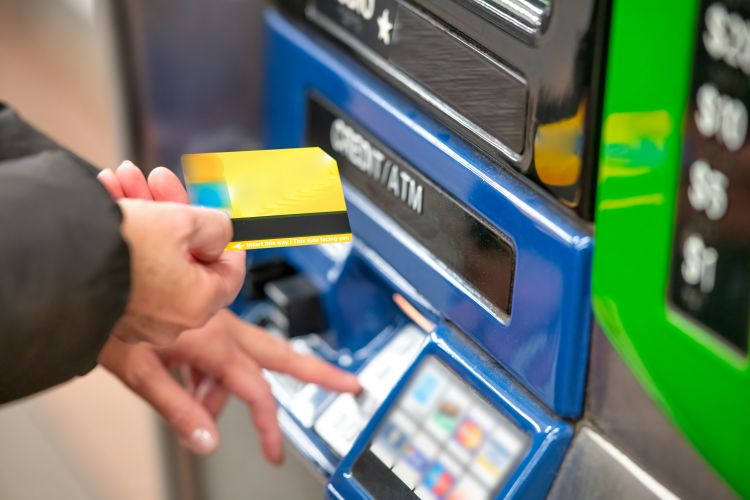
ATM count falls in India: The country’s financial ecosystem is undergoing a profound transformation, propelled by the rapid adoption of digital payments. But this surge in cashless transactions is casting a long shadow over ATMs — once an essential part of everyday banking for students, merchants, and tourists alike.
Even as currency in circulation has touched a record Rs 34.7 lakh crore since the 2016 demonetisation, the number of ATMs has started to plateau or decline. The Reserve Bank of India (RBI) reported that the total number of ATMs fell to 2.15 lakh in 2024, down from 2.19 lakh the previous year. At the same time, the number of bank branches rose sharply to 1.42 lakh in FY25 from 1.30 lakh in FY21 — signalling a structural pivot in banking priorities.
This shift highlights a growing dilemma: are ATMs becoming obsolete in urban India?
READ | Women empowerment must go beyond lip service
UPI surge redefines cash access
The meteoric rise of Unified Payments Interface (UPI) and internet banking has drastically eroded ATM usage. UPI transactions jumped from Rs 1 lakh crore in FY18 to a staggering Rs 200 lakh crore in the last fiscal year — a near-vertical growth curve that reflects India’s pivot to mobile-first banking. As per RBI data, ATM numbers peaked in 2023 and have since declined, with off-site ATMs — typically located in commercial complexes — registering the sharpest fall.
In urban areas where digital channels dominate, the demand for cash withdrawals has softened. Still, total cash withdrawals via ATMs in FY25 amounted to Rs 30.6 lakh crore — only a marginal increase from Rs 28.9 lakh crore in FY20. The data suggests that while cash continues to be relevant, particularly for small-value purchases, its dominance in cities is clearly receding.
Falling ATM count: High costs, low returns
Maintaining ATMs is an expensive proposition. Banks incur costs as high as Rs 1 lakh per ATM per month, covering rent, maintenance, cash handling, and security. Of this, rent alone for a small 7×5-foot ATM space can touch Rs 40,000. Meanwhile, regulations cap the number of free ATM withdrawals and limit interchange fees, further squeezing margins.
“The unprecedented scale of UPI adoption has naturally lowered ATM demand across India,” said Kunal Verma, Co-founder and CEO of Freo, highlighting the commercial pressures discouraging ATM expansion.
Compounding the issue are regulatory bottlenecks. The government’s ‘Make in India’ mandate, introduced in FY20, requires ATM components to be locally sourced — a move that has led to procurement delays and shortages, especially through the GeM (Government e-Marketplace) portal.
Rural-urban divide in cash access
While urban India embraces digital payments, rural and semi-urban areas — home to over 60% of the population — continue to rely heavily on cash. The RBI’s 2022 report revealed stark disparities: only 15 ATMs are available for every 100,000 people, and nearly 80% of these are located in urban centres. This, despite 67% of the population living in rural areas.
This mismatch could define the next phase of ATM deployment. Tier-II, Tier-III, and rural locations still report steady cash demand. Public sector banks maintain a broader ATM presence in these regions, while private banks are now expanding beyond metros to tap into underserved areas.
Urban banks, in contrast, are prioritising digital platforms to meet consumer demands for speed, convenience, and cost-efficiency — a move that has further pushed ATMs to the margins in cities.
Reinventing ATMs
To remain relevant, ATMs are being reimagined. Banks are increasingly deploying Cash Recycling Machines (CRMs), which support both cash deposits and withdrawals. This reduces reliance on physical branches while keeping essential services accessible.
Micro-ATMs — compact, portable devices that provide basic banking services — are also seeing a sharp uptick. According to RBI data, their deployment surged 18% from 1.24 million in September 2022 to nearly 1.46 million in 2024. These machines have emerged as vital tools for financial inclusion in remote regions.
ATMs are also getting smarter. Features such as biometric authentication and fund transfer options are being added, transforming them into mini-bank terminals. Analysts note that many banks are outsourcing ATM operations to specialised infrastructure providers under an “ATM-as-a-service” model — a cost-saving strategy that allows banks to focus on core banking while still offering cash access.
Coexistence, not replacement
While ATMs may be losing relevance in urban India, they remain indispensable in areas where internet connectivity and digital literacy are limited. Financial experts anticipate a hybrid model, where traditional ATMs, CRMs, and micro-ATMs coexist with digital channels to serve different demographic and geographic needs.
The evolution of India’s banking infrastructure will likely be defined by this dual-track approach: digital dominance in cities, and tech-enabled cash access in rural and semi-urban India. ATMs will not disappear — they will adapt.
Their future lies not in obsolescence but in reinvention. As digital payments continue to surge, India’s ATMs are being repositioned — from being the face of retail banking to becoming a vital support system in the journey toward universal financial inclusion.
